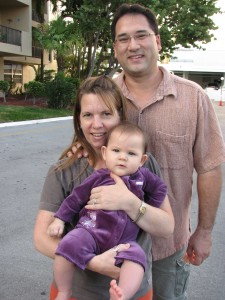The Space Room
Night Sky Events for June 2010
by Anna Sanclement
Moon Phases for June 2010
The Last Quarter Moon will occur on Friday the 4th at 6:13 p.m. EDT this month, with the New Moon following on Saturday the 12th at 7:15 a.m. The First Quarter Moon happens on Saturday the 19th at 12:29 a.m. and the Full Moon comes on Saturday the 26th at 7:30 a.m. There will also be a partial lunar eclipse happening on the 26th before dawn. The eclipse will be best viewed from the western states of the country, but here in the east we should still see about half of the moon in shadow.
Planet Lineup for June 2010
This month brings the beginning of summer in the Northern Hemisphere, which means that the Sun is at its highest point in the sky at noontime. Also, the path of the planets, called the ecliptic, is at its lowest in the sky at midnight.
So, because of this path of the planets, Jupiter is not in the best viewing position when it peaks late at night and early morning. However, Venus, Mars and Saturn are in good viewing positions in the evenings. Venus is very visible after sunset in the western sky, showing up as a bright shiny ‘star’.
Find Mars towards the western sky at twilight in early June and see it move slightly eastward as the month progresses. In the first half of the month Mars also appears next to the bright star Regulus, which will be a contrasting in blue-white to Mars’ ruddy red. The red planet will be closest to Regulus on June 6th where it will be just 1 degree north of the star.
Saturn will be in the high southwestern sky at sunset and on June 18th you will find it just above the First Quarter Moon. Saturn will be shrinking these next few months as it is moving farther from Earth.
Stars and Constellations to view in June, 2010
The Hercules constellation lies high in the eastern sky during the month of June; it looks like a small square with four long legs. The M13 star cluster lies between the two western square corners of the constellation and can be easily seen with a pair of binoculars.
Also appearing high overhead at around 9:00 p.m. is the Boötes constellation, which contains the bright star Arcturus. Find the star by looking at the southern-most point of the constellation.
The Big Dipper shines towards the north-northwest in the evenings and can be seen throughout the whole month of June and moving towards the northwest as the night progresses.
June’s Boötid Meteor Shower
On June 23rd the Boötid Meteor Shower will peak, and although the Gibbous Moon will be bright that night, there’s a big possibility that some meteors could be seen. To catch the shower, look towards the Boötes constellation (see above) high overhead, between 7:00 p.m. and midnight EDT.
The meteors from Boötid are said to hit the Earth’s atmosphere at about 40,000 mph.
Look on up and smile!
Read more of Anna’s articles at:
The Examiner:
http://www.examiner.com/x-30007-Space-News-Examiner
http://www.examiner.com/x-6503-Ft-Lauderdale-Science-News-Examiner
http://www.examiner.com/x-39025-Celebrity-Headlines-Examiner
Suite101:
http://www.suite101.com/profile.cfm/annasanclement
And check out the children’s book she co-published with mom:
http://www.ingridsanclement.com/
Editor’s Note: This month writer Anna Sanclement continues “The Space Room.” However, she now focuses on Sky Events instead of the previous focus on Sci Fi. THANKS, Anna and keep on “looking up!”

